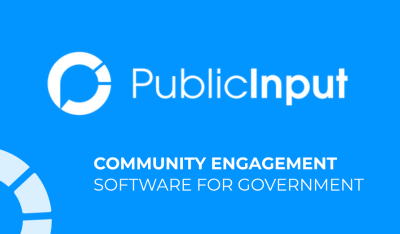
Exploring Community Engagement Software Options
State and local governments across the country are exploring opportunities to increase effectiveness, equity and internal efficiency. By making smart investments in public engagement software, public involvement practitioners are able to more effectively inform the decision-making process.
PublicInput supports the efforts to manage a broader public engagement process, not just a singular aspect. Check out this quick summary highlighting four best practice considerations for state and local governments seeking to implement public involvement software in their home communities.
1. Understand the current state of practice
Public engagement software is no longer a supplemental tool in a community’s larger communication and engagement strategy. It has evolved to become the foundational operating system that enables local governments to actively reach residents, create meaningful engagements, analyze input and deliver comprehensive reports for decision makers.
The ideal public engagement software should leverage the full spectrum of engagement formats, ensure equity in access to the process and save local government practitioners time and effort.
2. Community involvement software is no longer a “nice to have”
Community members expect access to government to feel like that of their engagements with consumer brands like Apple, Amazon and Google. They expect to communicate through the channels they’re most comfortable with — online, email, text and social — in a consistent, accessible and predictable way.
For public organizations, meeting and exceeding these expectations takes an increasing investment in staff, effort and data management. Just as the private sector has embraced technology to streamline and simplify the work of customer engagement, so too are savvy public organizations.
3. Explore community engagement expectations
The pandemic drove new expectations around communication and accessibility. Before, residents tolerated traditional, in-person ways of engagement. Today they expect to be able to participate remotely in ways that fit in their schedule. Meeting attendance and engagement have more than doubled as a result — and organizations and the public are not looking back.
4. Community engagement software improves public sector processes
Just as public engagement software is improving resident experiences with government, it’s also improving how organizations demonstrate representative engagement to support decision makers. As government organizations receive input on more channels (virtual meetings, surveys, social media, phone and email), it can be increasingly challenging to understand who they have heard from and more importantly, who they have not.
Forward thinking governments are shifting their approach to close the digital divide and demonstrate they’ve heard from the broader community. The right public engagement software supports this process by powering multiple means of reaching residents, the ability to easily understand what part of the community they represent and facilitating geo-targeted outreach to close the gaps when they arise.
Organizations are leveraging platform technologies to manage this process from one central system-of-record to reduce complexity for staff, ensure resident data privacy and provide clear reporting for decision-makers.
Key questions to ask when choosing community engagement software
Want to see the expanded buyers guide question and checklist? Download the state and local buyers guide today!



